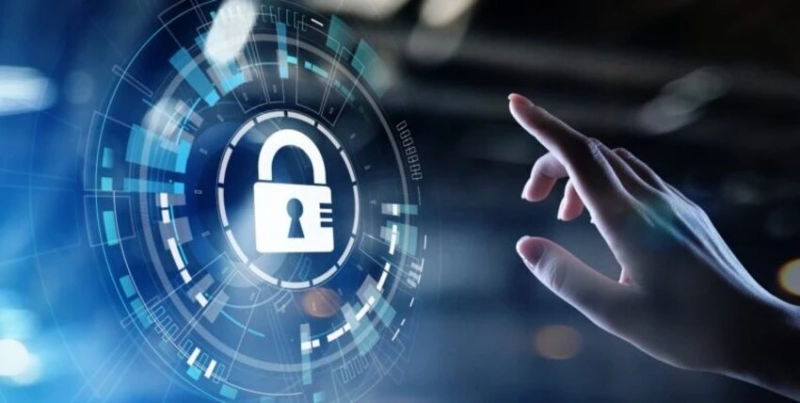A security operations centre, or cyber SOC, is a group of IT security professionals who monitor, detect, analyse, and investigate cyber threats for the organisation. Networks, servers, computers, endpoint devices, operating systems, applications, and databases are constantly monitored for indicators of a cyber security incident.
The SOC team analyses feeds, creates rules, identifies exceptions, improves responses, and monitors for new vulnerabilities.
Given that modern organisations' technology systems operate around the clock, SOCs typically operate in shifts around the clock to ensure a quick response to any emerging threats.
Cyber SOC teams may work with other departments and employees, as well as with expert third-party IT security providers. Organisations must first develop an overarching cyber security strategy that corresponds with their business objectives and challenges before establishing a SOC. Many large organisations have their own SOC, but others outsource their SOC to third-party managed security services providers.
Security intelligence and operations consulting services include a security solution arsenal to help you stay ahead of security threats.
How Does a Cyber SOC Operate?
The Cyber SOC's primary mission is security monitoring and alerting. This includes data collection and analysis in order to detect suspicious activity and improve the security of the organisation. Threat data is gathered from firewalls, intrusion detection and prevention systems, security information as well as event management (SIEM) systems, and threat intelligence. When discrepancies, abnormal trends, or other indicators of compromise are detected, alerts are sent to SOC team members.
SOC for Cybersecurity is a market-driven, flexible, as well as voluntary reporting framework designed to assist organisations in communicating about their cybersecurity risk management programme and the usefulness of controls within that programme.
It employs a common, underlying language for cybersecurity risk management reporting, similar to US GAAP or IFRS for financial reporting, to allow all organisations – across all industries to communicate necessary details about their cybersecurity risk management programmes.
The use of this common language improves comparability and enhances and complements disclosure of information based on other commonly used security frameworks, such as NIST or ISO's 27001, that are currently on the market.
What does Cyber SOC do?
Asset Identification
The SOC ensures that assets are monitored for security incidents by gaining a thorough understanding of all hardware, software, tools, and technologies used in the organisation.
Behavioural Analysis
The SOC monitors technology infrastructure for errors 24 hours a day, seven days a week. To ensure that irregular activity is quickly detected and addressed, the SOC employs both reactive and proactive measures. To reduce false positives, behavioural monitoring of suspicious activity is used.
Keeping Activity Logs
The SOC team must log all activity and communications that occur across the enterprise. Activity logs enable the SOC to go back in time and identify past actions that may have resulted in a cyber security breach. Log management also helps in the establishment of a baseline for what should be considered normal activity.
Alert Status
Not all security incidents are the same. Some incidents are more dangerous to an organisation than others. SOC teams can prioritise the most serious alerts by assigning a severity ranking.
Incident Response
When a compromise is discovered, SOC teams perform incident response.
Root Cause Investigation
Following an incident, the SOC may be tasked with determining when, how, and why the incident occurred. During an investigation, the SOC relies on log information to track down the source of the problem and thus prevent a recurrence.
Compliance Administration
Members of the SOC team must follow organisational policies, industry standards, and regulatory requirements.
Benefits of SOC
When a Cyber SOC is properly implemented, it provides numerous benefits, including the following:
System activity is continuously monitored and analysed.Improved incident response.Reduced time between when a compromise occurs and when it is discovered.Downtime has been reduced.Centralization of hardware and software assets results in a more comprehensive, real-time approach to infrastructure security.Collaboration and communication that works.Reduced direct and indirect costs associated with cyber security incident management.Employees and customers gain trust in the organisation and become more comfortable sharing sensitive information.Greater security operations control and transparency.A clear chain of control for systems and data is critical for successfully prosecuting cybercriminals.
About DriveIT
DriveIT Technologies, a group of Indian enablers, provides cybersecurity services. We transform cyber security issues into innovative solutions that meet our customers' needs. One of our primary strategies is to collaborate closely with our clients to secure and optimise their critical IT infrastructure.
With our assistance, the client's IT infrastructure will be safe, redundant, reliable, as well as recoverable, providing them with a flexible strategy to run their core businesses profitably and successfully. Cyber threats can have serious consequences for your business in an ever-changing threat environment. However, if you have strong cyber threat intelligence, you can reduce the risks that could harm your reputation and finances.
0


